TOUR HIGHLIGHTS
Ulaanbaatar - The capital city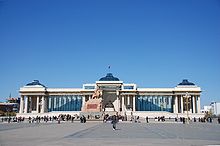
The capital of Mongolia is
Ulaanbaatar, a city with a long and rich history. Set in the rolling foothills
of the Bogd Mountain range, on the banks of the majestic Tuul River,
Ulaanbaatar is the gateway to Mongolia. Ulaanbaatar, historically known as
Urga, was originally established in 1639 as a nomadic encampment, which shifted
from place to place until it settled in its present location in 1778. The city,
situated at an altitude of 1,351 meters above sea level, stretches from east to
west across the Tuul River valley. It has a population of around 800 000 and a
surface area of 135,800 hectares. Holy mountains surround it; the Bogd Uul
Mountain to the south, the Songino Mountain to the west, the Bayanzurkh Mountain
to the east and the Chingeltei Mountain to the north.
Hustai National Park Tour
Hustai
National Park is the site of a unique re-introduction scheme of Przewalskii’s
horse (Equus przewalskii), called "takhi" by Mongolians. It
became extinct in the wild in 1969 and, since 1992, have been 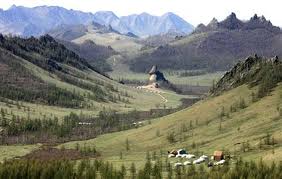 successfully
re-introduced to Hustai from zoos around the world. This has been an
international effort monitored by The Foundation for the Przewalskii Horse,
based in the Netherlands and MACNE (Mongolian Association for Conservation of
Nature and the Environment). The national park is rolling steppe mountains with
rather large patches of birch and aspen forests. There are also visible remains
of neolithic graves. In addition, red deer (Cervus elaphus) and wolf (Canis
lupus) have increased quite a bit during the last few years, as well as
Mongolian gazelle. Species present in Hustai but usually not seen include lynx,
argali sheep and roe deer.
successfully
re-introduced to Hustai from zoos around the world. This has been an
international effort monitored by The Foundation for the Przewalskii Horse,
based in the Netherlands and MACNE (Mongolian Association for Conservation of
Nature and the Environment). The national park is rolling steppe mountains with
rather large patches of birch and aspen forests. There are also visible remains
of neolithic graves. In addition, red deer (Cervus elaphus) and wolf (Canis
lupus) have increased quite a bit during the last few years, as well as
Mongolian gazelle. Species present in Hustai but usually not seen include lynx,
argali sheep and roe deer.
Hovsgol lake
Hovsgol province, located in the Hangai mountain range in northwestern
Mongolia, is unique compared with other parts of Mongolia. Many ethnic groups
live in Hovsgol: Mongols, Darhad, Hotgoid, Urianhai, Buriyad, and it’s the
Motherland of the Reindeer Families ‘Tsaatans’. It’s the place where Heaven and
Earth worshiping Shamans are still very powerful. There are almost 400 small
and large rivers, in addition to big rivers such as Selenge, Ider, Tes,
Delgermuren, Eg, Shishigt, and Chuluut. There are also over 50 hot and cold
springs. The average temperature in winter is minus 18-32C, in summer 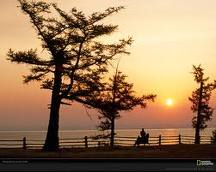 plus
15-30C. There are many wild and rare animals such as reindeer, elk, argali,
wild sheep, ibex, brown bear, wolf, Siberian roe deer, fox, marmot, corsac,
antelope and many different type of fish such as Taimen, Siberian white fish,
lenok, grayling, pike, ect, abundant in the lakes and rivers. There are about
300 large and small lakes, the biggest known as the ‘Dark Blue Pearl,’ Lake
HOVSGOL. Lake Hovsgol is located in the northern part of Mongolia. The lake
itself is one of the natural wonders there are a deep blue, and unlike its
sister Lake Baikal, its waters are pure and unpolluted. Steep rocky mountains
climb up both the Eastern and Western sides. It is a magnificent place to relax
or psursue your own daily pleasures.
plus
15-30C. There are many wild and rare animals such as reindeer, elk, argali,
wild sheep, ibex, brown bear, wolf, Siberian roe deer, fox, marmot, corsac,
antelope and many different type of fish such as Taimen, Siberian white fish,
lenok, grayling, pike, ect, abundant in the lakes and rivers. There are about
300 large and small lakes, the biggest known as the ‘Dark Blue Pearl,’ Lake
HOVSGOL. Lake Hovsgol is located in the northern part of Mongolia. The lake
itself is one of the natural wonders there are a deep blue, and unlike its
sister Lake Baikal, its waters are pure and unpolluted. Steep rocky mountains
climb up both the Eastern and Western sides. It is a magnificent place to relax
or psursue your own daily pleasures.
Gorkhi-Terelj National Park
The Park is situated at 80Km. north east of
Ulaan Baatar, and is a very popular area both with the locals on a week end and
with foreign tourists. It took us nearly two hours to drive from the capital as
the roads 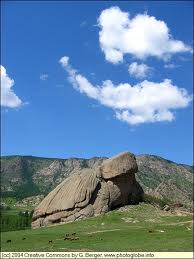 were pretty bad. The park lies at 1600 metres high and offers great
opportunities for hiking, horse-riding, rafting and rock climbing. The parks is
over 1.2 million acres large. The landscape is looking a little bit like the
alps. It is a national park which started to developed in the 1960's and
officially was classified as a National Park in 1994. It is almost uninhabited
by humans, only by a few nomads and farmers. Inside the park, there are ranges
of protected animals such as birds (250 species), moose, and bears. As it
become developed for tourism, some of the Ger camps have concrete car parks and
electricity. Camps are not at the same place depending of the season, there are
summer camps, and winter camps which are open mostly all year long.
were pretty bad. The park lies at 1600 metres high and offers great
opportunities for hiking, horse-riding, rafting and rock climbing. The parks is
over 1.2 million acres large. The landscape is looking a little bit like the
alps. It is a national park which started to developed in the 1960's and
officially was classified as a National Park in 1994. It is almost uninhabited
by humans, only by a few nomads and farmers. Inside the park, there are ranges
of protected animals such as birds (250 species), moose, and bears. As it
become developed for tourism, some of the Ger camps have concrete car parks and
electricity. Camps are not at the same place depending of the season, there are
summer camps, and winter camps which are open mostly all year long.
 Gandan Monastery
Gandan Monastery
Gandan is the largest and most significant monastery in Mongolia and one of
Ulaanbaatar's most interesting sights. Built in the mid 19th century, it is the
only monastery where Buddhist services continued during the communist years.
Temples are flocked by visitors during religious services that start at 10 a.m.
and last until mid day. Most important part of a monastery is the Megjid
Janraiseg temple.
 Winter Palace of Bogd Khan
Winter Palace of Bogd Khan
Built between 1893 and 1903, the Winter Palace of Bogd Khan was the home of the
Mongolia's last king Javzun Damba Khutagt VIII. This complex of temples and
houses contains a number of Buddhist artworks and the private collection of the
Bogd Khan, composed of gifts from rulers and kings from all over the world. The
artworks displayed here were made by the top Mongolian, Tibetan and Chinese
master-sculptors of the 18th and 19th centuries and represent the gods of the
Buddhist pantheon.
 Sukhbaatar Square
Sukhbaatar Square
This large and famous landmark is
the heart of Ulaanbaatar where the Parliament, the Government House, Stock
Exchange and many other important establishments are concentrated. It is named
after Sukhbaatar, the famous patriot, whose statue is the main attraction on
this square.
Karakorum resort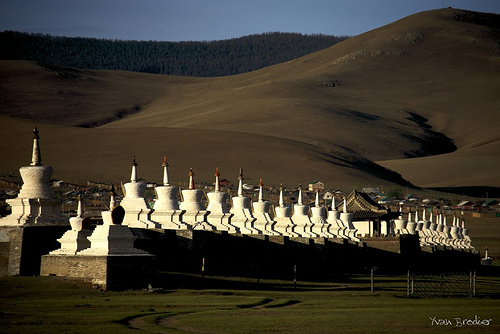
Kharakhorum is a destination not to be missed for those visiting Mongolia. In
the 13th century it was the capital of the Mongolian Empire. This town is close
to Erdene Zuu monastery, built in 1586 using the stones from the ruins of
Kharakhorum. It was the first Buddhist center in Mongolia and it housed 10,000
lamas(monkis) in 62 temples. In 1930’s it was badly damaged by the Stalinist
purges and only since 1990 has become an active monastery again. Two Turtles
Carved from rock marked the boundaries of the complex. Nearby is Shanhiin
Hiid(monastery) and Orkhon waterfall. Because of its proximity to Ulaanbaatar,
Erdene Zuu and Kharakhorum can easily be a part any trip.
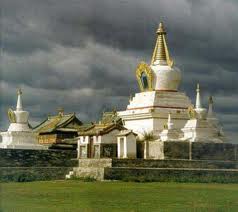 Erdene Zuu Monastery
Erdene Zuu Monastery
In 1586 when the Mongolian Khan Abtaisai returned home from his long pilgrimage
to Tibet, he founded the first Buddhist monastery for it?s beauty it was named
Erdene Zuu or Hundred Treasures. Erdene zuu was the first Buddhist monastery in
Mongolia It is surrounded by a monumental wall with 108 stupas measuring
400x400 meters. Each of the four sites of the wall has a tower gat. In 1792
there were 62 temples. 500 buildings with about 1000 lamas inside the
surrounded wall. It houses considerable historical and cultural values statues
of deities, ritual masks and costumes, canvases on religious motifs, samples of
mural and ceiling painting, articles, made by crafts men. Erdene-Zuu's temples
were destroyed by the anti religious campaign of Stalin of the 1930s and an
unknown number of monks killed. The monastery remained closed until 1965 when
it was permitted to reopen as a museum.
Gun-Galuut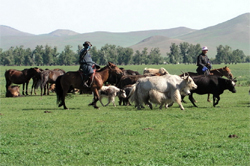
Amazingly, Gun-Galuut is the state combined from diversity of ecosystem although it owns comparatively small area. The harmonized complex of high mountains, steppes, rivers, lakes and wetlands as well are kept enough as its original condition. Whoever visiting enjoys to see Gun-Galuut vast steppe seems to meet the sky, the imposing mountains Baits and Berkh, a home land of rare creatures, Ikh-Gun and Ayaga lakes, a paradise of birds, Kherlen, the longest river of Mongolia and Tsengiin Burd wetland, in where water and wetland birds lay their eggs.
Gun-Galuut Nature Reserve is a local protected area for conservation of global threatened species. The Nature Reserve (NR) is founded by the Citizens' Representative Hural (Local Parliament) of Bayandelger county, Tuv Province in 2003.
Gobi desert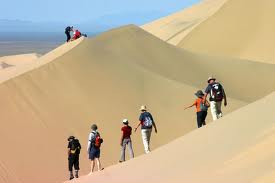
We also offer combination trips t the legendary Gobi desert. Here tourists can
view vast sand dunes, great Canyon The Glen of Condors, sighherds of antelope,
Przhevalsky’s Horses, Argali sheep, snow leopards or ibex, visit the hearty
nomads that run livestock here, or witness the flaming red cliffs where Roy
Chapman Andres made his incredible discovery of dinosaur fossils. The sights
are truly endless, but one of the great highlights for many tourist is camel
ride in this scenic desert.
Bayan zag Rich saxual
In the early 1920 newspapers brought news of the discovery of dinosaur eggs in
the southern Gobi Desert by American traveler Roy Chapman Andrews. This place
known as flaming cliffs discovered by the paleontologist, Roy Chapman Andrew.
First dug in 1922, it is popular of dinosaur bones and eggs found in the area,
which you can see in the museum of Natural History in Ulaanbaatar or mostly, in
other museums around the world. It is classic desert of rock, red sands, scrub
sun and awesome emptiness.
Bayangobi desert 
The Bayangobi, located 175 miles west of Ulaanbaatar, is a unique combination
of forested mountains and desert type landscape in one location. It is the
starting point for travel by car, or horse to the beautiful Batkhan Mountain
Preserve, only 9 miles away.
 Hongor els (Sand dunes)
Hongor els (Sand dunes)
The Hongor els are some of the largest and most impressive sand dunes in
Mongolia. Also known as the Duut Mankhan ( Singing dunes ) they are up to 300 m
high 12- 25 km wide and 100 km long. The largest dunes at the north west corner
of the range. You can climb to top of the dunes and slide back down that time
sand dunes will make amazing nice sound. The vistas of the desert is awesome
from the top of the sand dunes.
STELLATOUR LLC
13th khoroo,Songinokhairkhan district,
Ulaanbaatar, MONGOLIA
TEL: (976) + 55156773, (976)+98225662
Email: stella_tour@hotmail.com
All material ©copyright
2010







